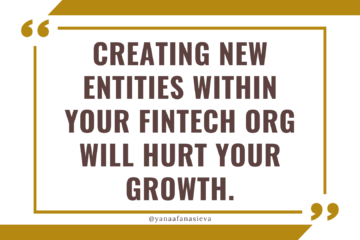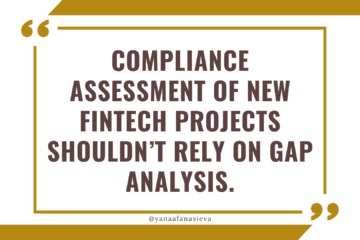FinTech Pricing Strategies in a Saturated vs Sophisticated Market
Many people say that FinTech became an overly saturated market without any serious opportunities left and it does not make sense to start anything new. Consumers expect everything for free, regulators impose new costly requirements, banking partners take forever to make decisions, and profitability is extremely hard to reach.
At the same time, the barriers to enter FinTech and kick off your startup in this space have never been lower because the costs of cloud services, standardized software, offshore development teams, costs of communications continue to decrease. I have met many entrepreneurs with businesses and backgrounds in robotics, real estate, or healthcare who are seriously considering starting a bank. It sounds naive, but for outsiders, it may very well feel that starting a bank is easy these days.
Anyway, when you think your market is saturated, it probably means that your customers have a lot of options to choose from and it is hard to compete. What does it mean for your go-to-market and pricing strategy when you think your market is saturated?
You give customers your best product, the best experience for free and hope they will eventually upgrade to a premium version, or you will later find a way to sell them something else.
Alternatively (especially in wealth or asset management), you can try and play the ‘trust and safety’ long-term relationship card and promise your customers more profits, more opportunities, and better experience in the future
However, your strategy can be completely different if you think your market is sophisticated. In a sophisticated market, your customers are still not satisfied with available products/services and have needs and demands that has not been met. They are picky and willing to pay for a service that meets their expectations.
If you believe this is the case, then in order to sell your services to sophisticated customers, you must win their minds, appeal to their values, be aspirational and ideally shift their thinking or perspective about what becomes possible for them when they use your product or service. Choosing you as a service provider or financial partner becomes a lifestyle, value-focused or identity-based decision. TransferWise, for example, did a great job with their provocative marketing campaigns during their early days.
Let’s look at how FinTech companies charge or do not charge their customers. It is not a secret that many FinTechs do not charge at all and call it ‘our customer acquisition strategy’. Which may or may not make sense. We also know that fees and charges (especially for consumers-facing financial services and retail banking) have been decreasing rapidly over the last years. And with regulatory restrictions around surcharges and extra fees for consumers, it is quite hard to make money in FinTech.
It appears that the following FinTech pricing trends have emerged:
- Subscription-based monthly fees are slowly and steadily replacing per-transaction fees (think Netflix or Amazon Prime)
- Consumers do not really know how much things should cost in many instances, and it is very hard for them to know whether a price is fair until plan options are presented to them in a specific context. Think Dropbox or any other SaaS product, when you are looking at 3 pricing plans where the left option is free. There is a clear, tested, and strong tendency to choose the middle option.
- VIP pricing plans or premium membership tiers are extremely effective – not necessarily because they are popular, but because they serve as decision-making anchors and make basic pricing look affordable in comparison.
- Free trials are practised but can attract a lot of tire-kickers in some businesses. I personally have not yet seen a successful model of no-fees trials in financial services.
- Pricing grandfathering is risky but can also work as a strong incentive. It means that your customers will be entitled to receive your services at a lower monthly price potentially over their lifetime, as long as they remain your members/subscribers. If you gradually increase your prices over time, your original members have a strong incentive to stay because they know that if they leave, they are losing a great deal. This pricing model could work well for services where your cost of delivery is under your control (e.g. trading inside of your platform or transactions between your members).
As seen in Finance Magnates.
If you followed me for a while and appreciate my perspective, but have not subscribed to my regular weekly newsletter, you might be missing out!
Click here and let’s stay in touch on the more regular basis!




